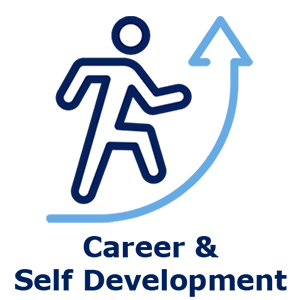NACE Career Readiness Competencies
Explore the NACE Career Readiness Competencies:
 |
 |
 |
 |
 |
 |
 |
What is Career Readiness?
Career readiness, according to the National Association of Colleges and Employers (NACE), means having the key skills and abilities that help college students succeed in the workplace. It connects what students learn in school with what employers expect on the job, making sure graduates are prepared for real-world work and future career growth. By using the NACE Career Readiness Competencies as a framework, we are providing a shared language across the university that helps faculty, staff, and students identify, develop, and communicate the essential skills needed for career success.
Make Career Competencies Visible with NACE Career Readiness Resources
Faculty and Staff can enhance student awareness of career readiness by adding the NACE competency icons directly into syllabi, assignments, and presentations. For example, when designing an assignment that builds communication or critical thinking skills, include the corresponding NACE icon next to the task description. This simple visual cue helps students make clear connections between classroom learning and professional competencies, reinforcing the value of their academic work in real-world settings. Over time, this consistent use of icons can build students’ confidence in articulating their skills to future employers.
In order to help students clearly see how course activities relate to real-world skills, try embedding these behaviors in your activities. For example, when teaching Teamwork, include sample behaviors like “Collaborate with others to achieve common goals.” or "Be accountable for individual and team responsibilities and deliverables." This provides students with language they can later use in résumés, cover letters, or interviews - bridging academic experiences with professional success.
How to Use the NACE Competencies:
- In Curriculum Design: Align course objectives and assignments with specific competencies to help students recognize how their academic work builds career-relevant skills.
- In Feedback and Assessment: Use the competencies as benchmarks to provide meaningful feedback on student performance, emphasizing their growth in areas like communication, teamwork, or critical thinking.
- In Advising and Mentoring: Guide students in reflecting on their experiences and mapping them to the competencies, helping them articulate their skills in resumes, cover letters, and interviews.
- On Departmental Websites: Display the NACE icons and related competencies alongside programs, courses, or co-curricular activities to show students how the competencies correlate to the activities.
Reference:
National Association of Colleges and Employers. (n.d.). What is career readiness? https://www.naceweb.org/career-readiness/competencies/career-readiness-defined/

